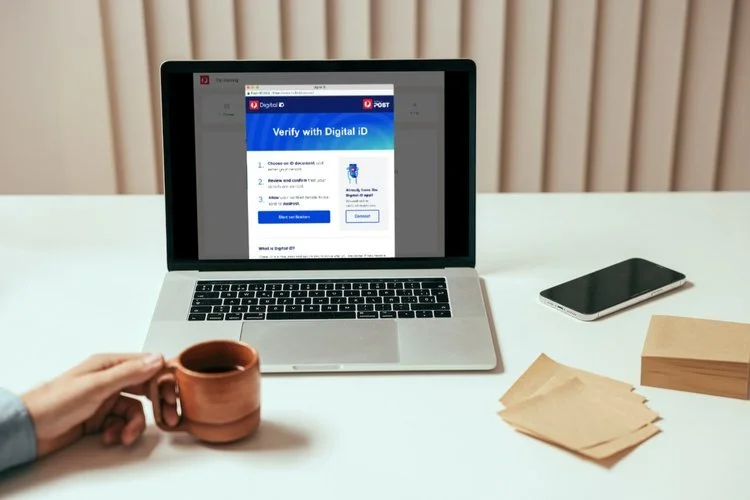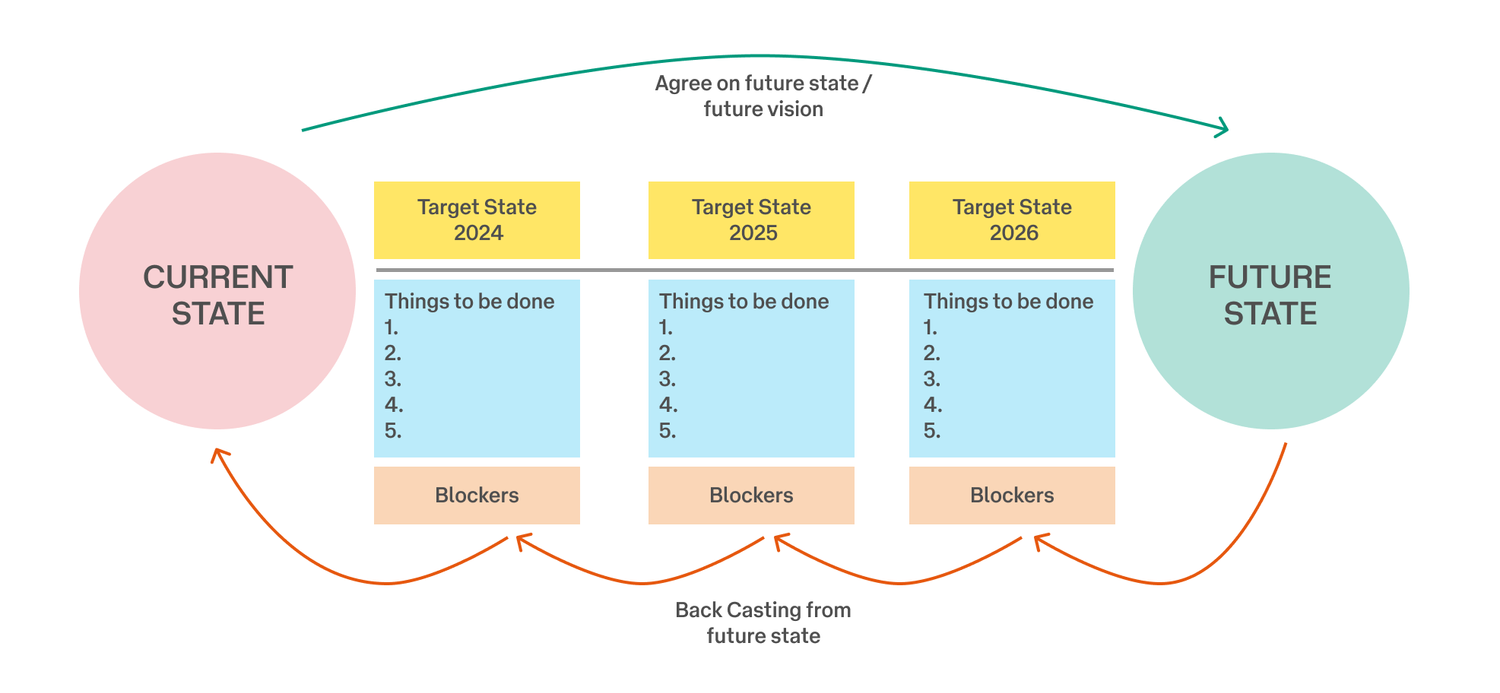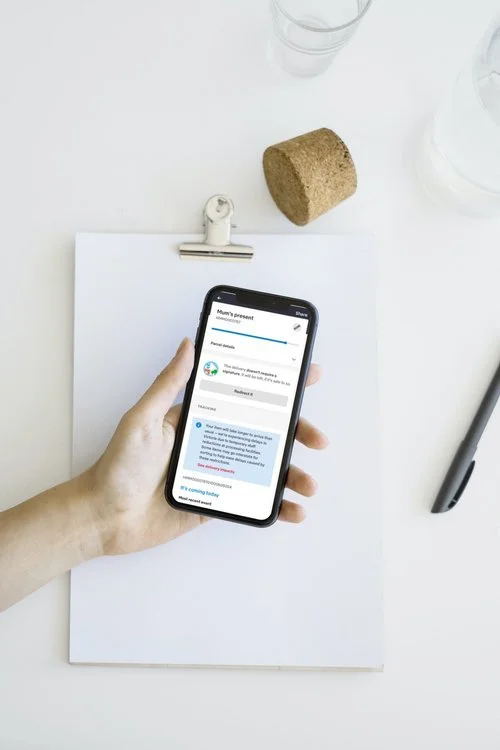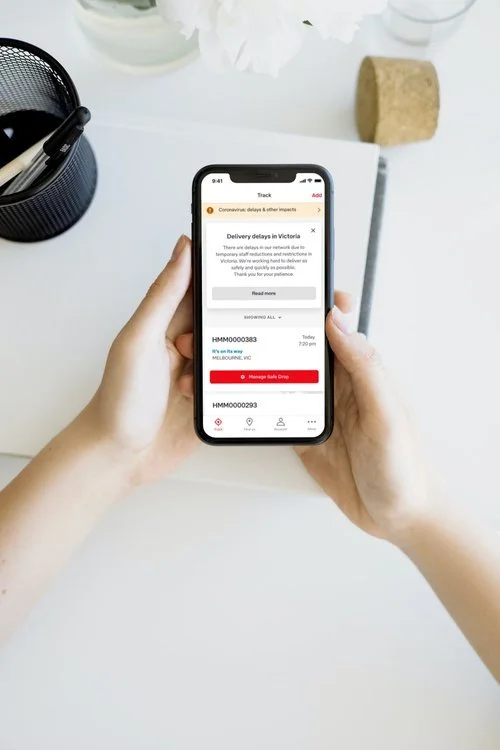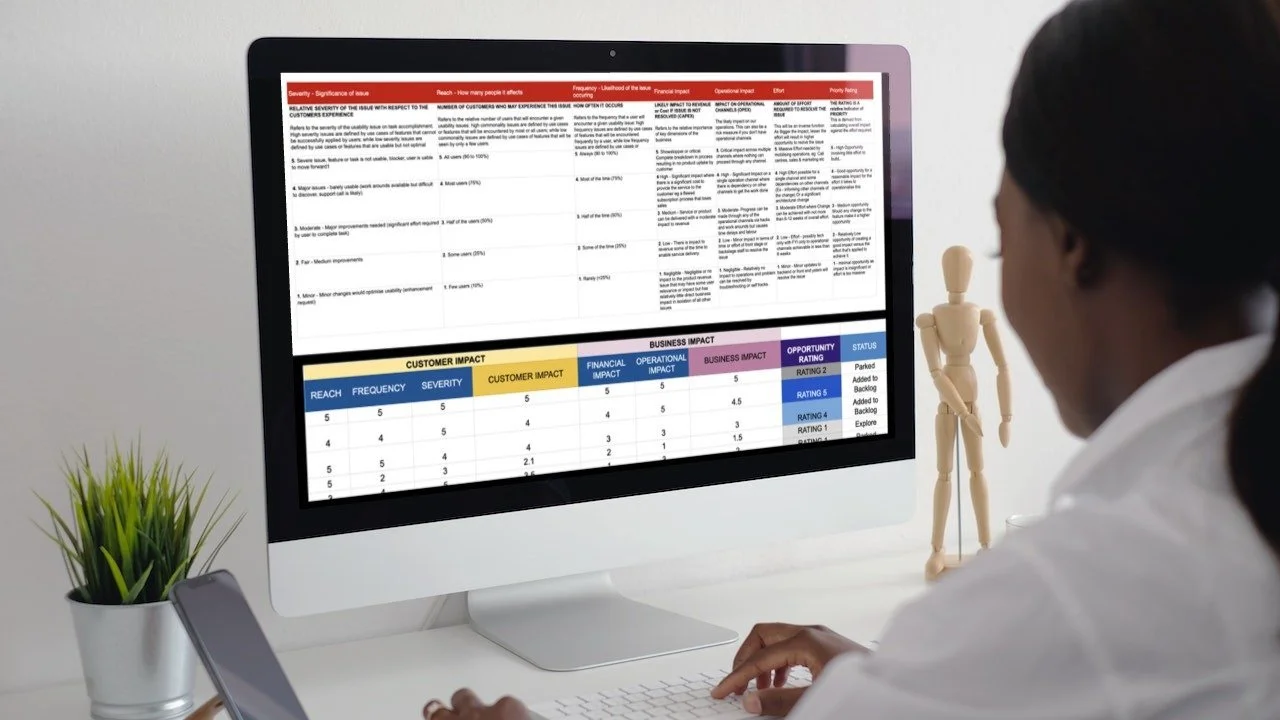Digital & Service Design
Design is where it all started. As a design leader, hands-on design is something where I work to drive continuous improvement. Whether it’s through micro design interventions or systems changes, I have worked to make design a collaborative outcome instead of a solo contribution leading to higher quality outcomes that are empathetic to the end user.
Enabling digital for retail
AusPost has 4800 retail outlets countrywide, making it the largest brick-and-mortar footprint in Australia. Our retail stores are a vital conduit for our customers to post their parcels, get their identity checks, land transfers, passports, and verifications done, and even for leisure shopping of air-fryers and sewing machines. Digital then becomes a bridge for many customers to bridge and simplify their retail transactions.
Mail-redirection uplift
The AusPost Mail redirection service is the second-highest call driver to our contact centres. The service had a limited online presence as it involved complex scenarios which would drive the customer to call our contact centre for resolution and eventually to retail outlets for transaction completion.
I implemented a dual-track service design approach for rapid delivery of quick optimisations while a well-thought research and discovery piece for investigating challenges of retail outlets and distribution centres.
My team investigated staff and customer behaviours and developed design interventions for the end customer and field staff to enable smoother transactions.
Owing to massive operational impacts, I socialised the work through service walkthroughs and workshops to exec leadership and key stakeholders across all operations to achieve buy-in and sponsorship for an end-to-end solution.
This process also enabled feasible collaboration between digital, operations and retail teams to achieve a successful outcome.
Outcome: There was a 28% dip in call centre volumes, and 22,000 impacted customers/month who would go to retail stores to complete their abandoned transactions could now be redirected to digital to free up in-store staff for revenue-based transactions.
30% of our customers needing concessions could now complete their transactions online, which they would have to step into stores for.
PO Boxes are not just a safe and secure way to receive letters and parcels from businesses and end users; they are also free of cost to victims of domestic violence who need anonymity and security when receiving their mail.
Up-till 2019, the PO Box renewal online experience had many dropouts, with only 23.4% conversions after the first page. The main barriers are a complex and confusing address look-up process and multiple steps before the payment portal.
I led the uplift of the renewal project as a pilot of a collaborative design activity between the product, development and design teams. I prepared a problem brief canvas to get the various stakeholders from retail and digital to share their challenges and the outcomes they expected from the result. The initiative involved repositioning the problem statement with stakeholders to understand the key outcomes instead of receiving a solution brief.
Payment Uplift
Experience Brief for unpacking a problem with stakeholders
I organised an ideation exercise to facilitate ideas around removing renewal barriers. This process was the first time the development and business teams were involved in ideating an idea together with the Experience team. The collaboration was well received, resulting in multiple concepts that were tested, validated and finally matured into a design.
Outcome: The result of the exercise was a much leaner payment that caused a significant channel shift and reduced processing time for retail staff. The success of the process resulted in all future projects adopting a similar collaborative and highly engaged problem-solving approach.
Leading Change
Change is the only constant for organisations like AusPost, which can be daunting. Managed and led change initiatives to respond to various challenges within and outside AusPost to ensure the long-term sustainability of the team and organisation.
AI to uplift Help & Support
The ‘Help and Support’ experiences at Australia Post are distributed across many isolated portals corresponding to products that may all be built on varied development frameworks. Enable a consistent experience across various platforms and ensuring a customer coming from different touch points gets consolidated and unified guidance has been challenging. Managing these elements effectively requires a sophisticated and well-organized support structure. Key challenges in achieving this have been:
Broad spectrum of services accessed by the same customer with changing archetypes
Multiple interaction channels on different technology architectures. (about 148 portals and counting)
Legacy data that needs combing and cleaning.
Huge change management exercise.
The Approach
When enabling incremental changes or solving a known problem in a system - a traditional service design approach can yield excellent results as it allows a deep dive into the current state of services vs where optimisations can be made to arrive at a future state. Here the overall journey of the user often remains the same.
However - in this case - a traditional CX approach would be lengthy. It would not set up the enterprise for the future of H&S, which is a lot more integrated and ubiquitous with the user’s transactions across their e-commerce footprint.
Hence I approached this problem by encouraging the leadership to try a Future Casting approach and then backcasting on the enablements needed to achieve the agreed vision of the future.
Next, engaged the AI & Data Science team at AusPost to explore opportunities to resolve this using LLMs.
Future Casting
Outcome: We swiftly developed an effective Help and Support Strategy that leverages Large Language Models (LLMs) to analyze our varied data sets. This approach enables us to generate consolidated responses that are tailored to each user's unique context and their interactions within our ecosystem.
AI to solve Help & Support Data strategy
Using AI has reduced a potentially 8-year roadmap into a 3-year roadmap.
Pandemic Response
The digital team at AusPost is the key connector, communicator and facilitator of experiences for all Australians. This role became all the more important during the onset of the pandemic, with 300 million visits to the parcel tracking website and contact centre calls increasing by 18% to 10 million in 2020. I and the rest of the digital leadership team were part of a Pandemic response task force.
Immediate response
With an anxious population dependent primarily on online deliveries during lockdowns, my team and I worked on a whole new suite of smart notifications and comms for web and mobile experiences spanning the entire delivery journey directed at end customers and merchants. UX content was crucial in considering multiple impact scenarios and subsequent communications that needed to go out to reassure the user.
We designed the first slice of the project, built and delivered it within two weeks with continuous learning, optimisation and delivery ongoing for the following 3-6 months.
Notification strategy
Setting expectations on track
In-app notifications
Outcome: The work resulted in a significant drop of 15% in contact centre call volumes and a channel shift from voice support to digital, with app downloads doubling and the app rated as the #1 business app in the iTunes store.
The work done continues to support Peak volumes to date.
Post Pandemic Strategy
The Pandemic Response Leadership Team working group also looked at the long-lasting effects that the pandemic may have around an increase in digital traffic and customer behaviours across all digital channels of AusPost, including App, MyPost (Consumer facing Logged-in experiences), Small Business and Online Shop.
With e-commerce growth expected to continue, urgency and focus around our digital priorities were needed to retain new and existing customers.
A key output of this research and strategy piece was insights and data around:
Global Shift in consumer behaviours
Growth in e-commerce and the subsequent impact on our digital experiences
Trends and shift in behaviours of the growing (340,000) new digital customers and their expectations out of digital interactions.
Sample of consumer archetypes formulated as part of Post Pandemic Research and Strategy.
Sample of merchant archetypes formulated as part of Post Pandemic Research & Strategy
Outcome: The research and Post Pandemic strategy helped inform the 2021-22 digital experience roadmap. The accurate projections of changing customer and merchant behaviours allowed us to prioritise digital products that addressed the shift in expectations and sticky trends post-pandemic.
Measurement of Outcomes
Measuring outcomes becomes meaningful when key business metrics align with experience metrics. NPS has always proven to be hard to use as a metric when a design is at its conceptual and development stage. It is even harder to use when measuring strategic initiatives for customer impact.
I developed a relative prioritisation framework that would help break down customer pain points into metrics of reach, severity, frequency and overall impact on the customer through relative values. This model provided a robust customer and data-led, rapid prioritisation capability, allowing digital teams to prioritise deliverables for maximum value.
Prioritisation model for prioritising opportunities and strategic concepts.
Outcome: The prioritisation of a strategic backlog of digital experiences on data-led, customer and business-driven metrics that allowed us to deliver products that had commercial and customer relevance.

